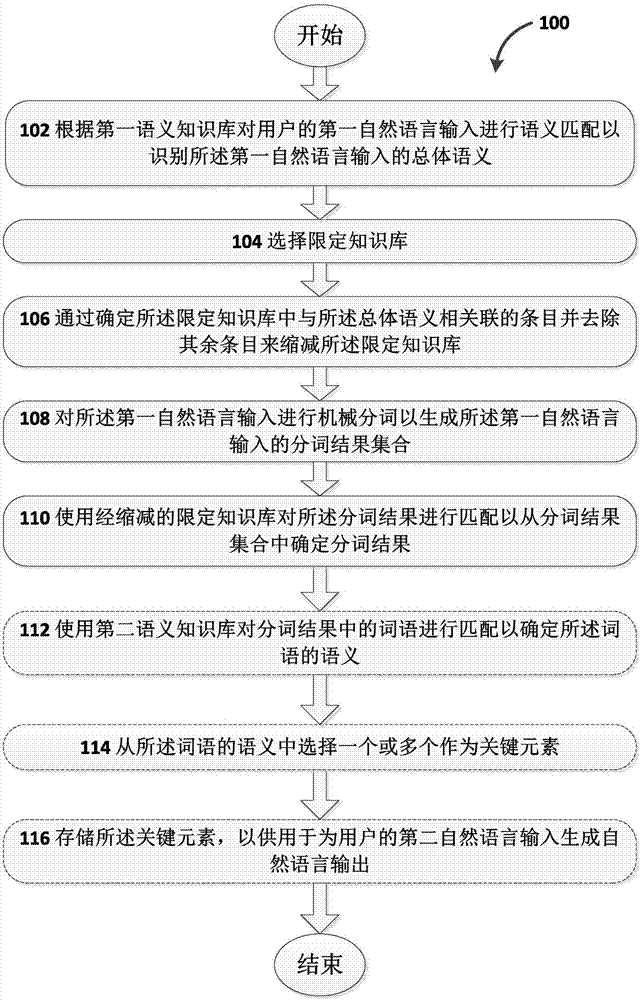Method for extracting key elements from natural language input of user
A technology of natural language and key elements, applied in natural language data processing, semantic analysis, special data processing applications, etc., can solve problems such as increased computing costs, poor user experience, and huge amount of computing, so as to improve word segmentation accuracy and improve Word segmentation efficiency and the effect of reducing the amount of calculation
- Summary
- Abstract
- Description
- Claims
- Application Information
AI Technical Summary
Problems solved by technology
Method used
Image
Examples
Embodiment Construction
[0041] figure 1 The flowchart of the method 100 for extracting key elements from user's natural language input according to the present invention is shown, wherein the dotted boxes represent optional steps.
[0042] In step 102, perform semantic matching on the user's first natural language input according to the first semantic knowledge base to identify the overall semantics of the first natural language input. The overall semantics can be identified, for example, by identifying the sentence pattern of the first natural language input. For example, the sentence pattern of the sentence "I want to eat hamburger" is "I want to eat...", so that it can be determined that the general meaning of this sentence is consistent with "Food" is associated, so that the entries that are not related to "food" in the limited knowledge base can be removed, thereby reducing the limited knowledge base. The matching process can be performed using existing technologies, such as greedy algorithm, a...
PUM
 Login to View More
Login to View More Abstract
Description
Claims
Application Information
 Login to View More
Login to View More - R&D
- Intellectual Property
- Life Sciences
- Materials
- Tech Scout
- Unparalleled Data Quality
- Higher Quality Content
- 60% Fewer Hallucinations
Browse by: Latest US Patents, China's latest patents, Technical Efficacy Thesaurus, Application Domain, Technology Topic, Popular Technical Reports.
© 2025 PatSnap. All rights reserved.Legal|Privacy policy|Modern Slavery Act Transparency Statement|Sitemap|About US| Contact US: help@patsnap.com

